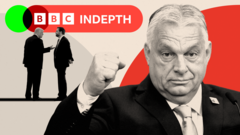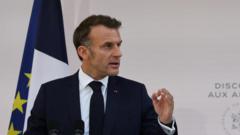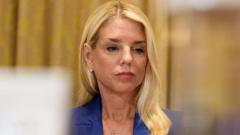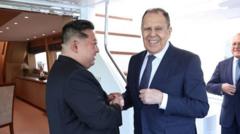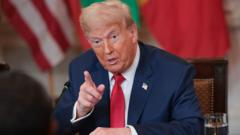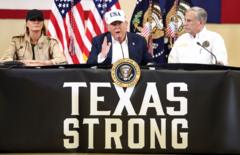As President Trump approaches the six-month mark of his administration, he prepares to reveal a significant change in policy concerning the ongoing conflict in Ukraine.
Trump's Shift: Embracing Ukraine and NATO Amidst Ongoing Conflict

Trump's Shift: Embracing Ukraine and NATO Amidst Ongoing Conflict
In a pivotal policy shift, President Trump gears up to formalize plans for arming Ukraine, aligning closer with previous administration strategies while navigating criticism.
In a notable departure from his initial stance, President Trump is now set to announce plans to arm Ukraine through European allies. This decision marks a pivotal shift from his earlier approach, where he expressed skepticism towards NATO and sought rapid resolutions to the conflict. Trump's forthcoming announcement, expected during his meeting with NATO Secretary-General Mark Rutte, will outline a strategy to facilitate the supply of American weapons to Kyiv. Additionally, there's an indication that he may endorse new sanctions, reflecting a tougher stance against President Vladimir Putin’s Russia.
Previously, Trump had been cautious about directly involving the U.S. in the conflict. During his campaign, he positioned himself as a strategist capable of negotiating peace with Putin. However, upon taking office, his rhetoric changed, often placing blame on Ukraine for their plight and making unfavorable comments about its leadership. This new approach suggests a complex balancing act as Trump attempts to engage more seriously with NATO while addressing pressures from bipartisan lawmakers to take a firmer stand against Russian aggression.
Trump's recent consideration of a Senate bill imposing hefty tariffs on nations purchasing Russian energy illustrates his evolving perspective. Although this measure grants him discretion rather than mandates action, it signals an unwillingness to continue previous leniency toward Russian energy exports. As Trump's administration navigates these new waters, analysts remain cautious about his commitment to this revised strategy. Whether this marks a genuine shift in policy or remains a temporary trend as geopolitical dynamics evolve will be closely monitored in the upcoming weeks.





